Exchanges between Mappilas and Arabs: Malayali Muslim Cultural Registers in Bottom-Up Translation
A Brief History of Kerala and Arabic
The history of Malabar, the southwestern coast of the Indian subcontinent, intertwines with Arab traders as early as the 7th century CE (1st century Hijra). Arab explorer and historian Ibn Battuta described Malabar as spanning from southern Kayamkulam to northern Gokannam, encompassing Ceylon and the Maldives. Some historians trace this connection even further, suggesting that Arab traders engaged with Malabar as early as the era of Prophet Sulaiman, exchanging gold, silver, and ivory.
By the 7th century, Arab traders had established robust commercial and cultural ties in Kerala. They introduced Islam, built mosques, and integrated with local communities through intermarriage, notably within the Arakkal royal family. Kerala’s spices, ivory, and gold drew Arab merchants, while mutual respect between Hindus and Muslims fostered an environment where Islamic traditions thrived. The poet Imru’ al-Qais referenced Kerala’s pepper in his works, underscoring the depth of this historical connection.
To facilitate communication, Keralite Muslims developed Arabi-Malayalam, a hybrid script using Arabic characters to write Malayalam words. This script became essential for religious texts, poetry (such as Muhyiddeen Mala), and education. Though some viewed it as a "sublanguage," Arabi-Malayalam was instrumental in preserving Mappila culture and Islamic teachings. A.C. Burnell noted that Mappilas were far from lacking literature, possessing historical texts and printed religious songs, with southwestern Mappilas speaking a distinct dialect written in Arabic script.
Yemeni scholars, particularly the Makhdoomis, settled in Ponnani and advanced Islamic education in Kerala. They authored significant works like Thuhafath-al-Mujahideen, Kerala’s first historical text in Arabic, and established the Dars system for teaching Arabic and Islamic studies. Later, Gulf migration in the 20th century reinforced Arabic’s influence, as returning migrants sought deeper engagement with the language.
Traditional Dars schools prioritized religious studies but often lacked literary depth. To address this, Kerala established modern institutions like Jamia Nooriya Arabiyya (1963) and Darul Huda Islamic University (1986). These colleges integrated religious and secular curricula, producing scholars proficient in Arabic, Malayalam, and other languages. Their graduates significantly contributed to translation, literature, and cultural exchange, enriching Kerala’s Arabic intellectual tradition.
Bottom-Up Translation: A New Trend on the Rise
Bottom-up translation, where works are translated from vernacular languages like Malayalam into Arabic, marks a significant shift from traditional translation practices. Typically, translating from Arabic to a vernacular language implies that the receiving language lacks its own literary corpus, borrowing heavily to compensate. However, translations from Malayalam to Arabic have challenged this notion, elevating Malayalam’s status and drawing global attention to its literary richness. This reverse trend is not unique to Malayalam; other vernacular languages, such as Sanskrit, have also seen their works translated into Arabic. A historical precedent is the invitation by Yahya ibn Khalid of the Barmakids, under Caliph Harun al-Rashid in 786 CE, for Indian scholars to visit Baghdad and translate Indian texts into Arabic, highlighting this early exchange.
Malayali Muslims, as primary agents and beneficiaries of cultural exchanges with Arabs, have played a pivotal role in this trend. Their expertise in vocational and organizational activities in Gulf countries necessitated cultural contributions from Kerala. The rapid growth of Malayalam classical literature fueled this transmission, moving beyond mere transliteration to establish Malayalam as a literary force. While Kerala’s contributions to Arabic literature were smaller in volume compared to what it received, they were significant in impact. This new translation trend has generated enthusiasm among Arab publishers, fostering a dynamic cultural dialogue.
Malayalam to Arabic Translation: Pre-2000 Period
In the 20th century, Malayalam-to-Arabic translations, led by Muslim writers, revitalized Malayalam literature by introducing its classical texts to new audiences. This period saw the emergence of translated literary works, driven by a concerted effort to elevate Malayalam’s global presence. The establishment of the Kerala Sahitya Akademi in 1956 was a pivotal moment, as it organized literary initiatives and emphasized producing works to achieve international readership. This "Kerala model" of literature development gained widespread acceptance among scholars, writers, publishers, and readers, who viewed translation as a bridge connecting Malayalam literature to Arabic-speaking audiences.
Linguistic scholars played a crucial role, studying target languages and analyzing the relevance of Malayalam classics to Arabic readers. The deep cultural and moral ties between Kerala and Arab countries influenced translators to prioritize Arabic as a target language. Building on the historical art of tarjama—a trailblazing tradition of inter-civilizational translation from Muslim-ruled Baghdad to the present—Malayalam-to-Arabic translations can be divided into two eras: pre-2000 and post-2000.
In pre-2000 period, translation was often treated as a duty rather than a creative service. Translators, frequently commissioned and well-compensated, approached their work as a paid job. The dominant styles were metaphrasing (literal translation) and paraphrasing, which prioritized fidelity to the source text over artistic expression. Consequently, translated literature often lacked vibrancy, as the connection between the art and its creators was not deeply nurtured. This cultural disconnect hindered the full potential of these early translations, despite their role in elevating Malayalam literature’s global reach.
Major Works of the Period
- Shemmeen (Al-Samakath al-Saghira)
The first Malayalam-to-Arabic translation, Shemmeen (Al-Samakath al-Saghira), was translated by Arabic scholar and journalist Dr. Muhyiddeen Aluway. The original work, Chemmeen by Thakazhi Sivasankara Pillai, written in the 1950s, is a celebrated novel known for its compelling storytelling and recipient of the Kerala Sahitya Akademi Award. Chemmeen portrays a poignant love story set against the backdrop of poverty and superstitions in coastal Kerala, with central characters Karuthamma, Parukutty, Chembankunju, and Chakki. The narrative captures the social dynamics of coastal life and the intense emotions of a fisherman who reveres his wife as a symbol of security. Dr. Aluway strove to preserve Malayalam cultural nuances in Arabic, though the traditional dialects and indigenous style of Thakazhi posed translation challenges. While he struggled with the "untranslatability" of certain elements and maintaining the author’s full intent, the translation successfully introduced Kerala’s coastal culture to a global audience.
- Al-Zahrath al-Saqitha
Another significant work, Al-Zahrath al-Saqitha ("The Fallen Flower"), was translated by Nanmanda Aboobakar Musliyar in 1989 and published by Arafa Publications, Calicut. The original text, Veenapoovu, is an anthology by Kumaran Asan, one of Kerala’s greatest poets. This translation marked a milestone by venturing into poetry, expanding the scope of Malayalam-to-Arabic translation across literary genres. Aboobakar Musliyar faced challenges in capturing the emotional depth, imagination, and love for nature inherent in Asan’s work, yet his effort in maintaining rhyme was notable for a pioneering attempt in poetic translation. The work reflects on the transient nature of life, likening it to a fallen flower, and vividly portrays the feminine allure of youth, resonating with readers. Dr. M. Leelavathy describes it as a poignant meditation on the mortality of beauty.
- Kerala Mappila Paithrkam
Translated by Prof. Suharabi Mattummal and Prof. KT Muhammed Kalathingal Thodiyil, Kerala Mappila Paithrkam is based on the original thesis by K.K.N. Kurup, a prolific author of 40–50 books in Malayalam and English. Published by Al Huda Bookstall in 1999, this work explores the religion, culture, and history of Kerala’s Mappila Muslims. The translation provides a scholarly examination of Mappila heritage, contributing to the broader understanding of their cultural and historical significance in an Arabic-speaking context.
Second Era of Translation
The post-2000 era marked a significant shift in Malayalam-to-Arabic translation, driven by advancements in Kerala’s education system that brought talented scholars into the mainstream of art and literature. Exposure to global literary trends and strong connections with foreign scholars introduced Kerala to progressive literary concepts. Translation became systematized, with formalized "techniques of translation" opening up vocational opportunities worldwide. This period, often described as a "period of transition," was shaped by a cultural renaissance in Kerala, initially influenced by Arab traditions and later by Western ideas. This socio-cultural evolution fostered progressive thinkers and intellectuals, transforming the landscape of translation.
Unlike their predecessors, post-2000 translators worked voluntarily, viewing their efforts as a cultural service rather than a job. The practice shifted from group-based translation to individual endeavors, eliminating intermediaries who had previously commercialized the art of tarjama. These translators, distinguished by their elegance, skill, and language proficiency, forged strong ties with major Arab publishers. Their contributions earned global recognition for both Arabic and Malayalam literature, revitalizing Kerala’s role in Malayalam-to-Arabic translation. Though fewer in number, the works produced in this era reflect significant cultural and literary impact, as detailed below.
Major Works of the Second Era
- Ayyām al-Māʾiz
Benyamin’s Aadu Jeevitham, translated into Arabic as Ayyām al-Māʾiz in 2014 by Suhail Abdul Hakeem Wafy, narrates the harrowing story of Najeeb, a Kerala man trapped in desert slavery. Wafy, an expatriate and journalist, emphasized the struggles of migrant workers, embedding Malayali values in the translation to bridge Kerala and Arab cultures. The work transcended its role as a translation, earning significant literary acclaim.
- Zawʾ al-Qamar
Zawʾ al-Qamar, translated by Syrian translator Samar Al-Shishkali in 2015, is based on Zuhra’s Malayalam novel Nilavu. Set in the Maliyekkal house, it reflects the rich Mappila dialect of Kozhikode. Despite Al-Shishkali’s less refined style, the core narrative retained its strength. Published by Markaz Sultan Bin Zayed, Abu Dhabi, it enriched cross-cultural literary exchange.
- Al-Ṭalāq
Also translated by Samar Al-Shishkali in 2015, Al-Ṭalāq is the Arabic rendition of Zuhra’s Mozhi. This novel highlights cultural diversity through regional dialects, with Al-Shishkali prioritizing storytelling and thematic depth. Published by Markaz Sultan Bin Zayed, it furthered the visibility of Malayalam literature in the Arab world.
- Mithlā Tarnīma
Mithlā Tarnīma: Qināʿun Hindiyyun li-Ḥayāti Dastayowski, translated by Egyptian writer Eid Ibrahim in 2015, is based on Oru Sankeerthanam Pole by Perumbadavam Sreedharan. This work captures the emotional and musical essence of Dostoevsky’s life, published by Dar Al Hilal, and showcases the depth of Malayalam literary expression.
- Kālam
Sahar Thoufeeq, an Egyptian writer, translated Kālam by M.T. Vasudevan Nair, retaining the original title in Arabic. Known for its rich language and timeless imagination, this translation was published by Kalima Books, UAE, reinforcing the literary bridge between Kerala and the Arab world.
Other Works
Vaikom Muhammad Basheer, Kerala’s “Master of Story,” portrayed Malayalam traditions vividly. His short story Nirasha was translated into Arabic as Al-Yaʾs. Additionally, Ponkunnam Varkey’s Shabdikkunna Kalappa was translated and published by the Indian Sahitya Akademi. Sibgathulla Hudawi translated Vailoppilli’s renowned poem Mambazham, bringing Kerala’s poetic heritage to Arabic readers.
Shihab Ghanem and Poetry Translation
Dr. Shihab Ghanem, a UAE poet, has been a pivotal figure in Malayalam-to-Arabic poetry translation since 2005. His translations include Kamala Surayya’s Ya Allah as Ranīnū Thurayyā (2011) and Sachidanandan’s Sachidanandante Kavithakal as Kayfa Intaḥara Maykowski (2009), both published by Abu Dhabi Culture and Heritage (Kalima). His work Rathrimazha, translated as Maṭar al-Layl wa-Qaṣāʾid min al-Sharq wal-Gharb, is celebrated for its vivid imagery and published by Dubai Culture. Ghanem also translated works by poets such as Edasseri Govindan Nair, Vailoppilli Sreedhara Menon, O.N.V. Kurup, and contemporary poets like Asmo Puthenchira, Shihabuddin, Kamarudheen Amayam, and Kuzhur Wilson, featured in Malayalam weeklies, enriching the Arabic literary landscape.
Latest Translations
The following are the most recent major works in the field of Arabic translations of Malayalam literature:
- Bayt al-Ajdād
The novel Naalukettu by M.T. Vasudevan Nair was translated into Arabic as Bayt al-Ajdād by Musthafa Wafy and Anas Wafy. Published in 2019 by Madarek Publishing House, Riyadh, this work captures the intricate familial and cultural dynamics of Kerala’s matrilineal society. - Rafīqat al-Ṣibā
Vaikom Muhammad Basheer’s Balyakala Sakhi ("The Childhood Friend") was translated into Arabic as Rafīqat al-Ṣibā by Suhail Abdul Hakeem Wafy. Published in 2019 by Arab Scientific Publishers, Beirut, this novel reflects Basheer’s signature portrayal of human relationships and Malayalam traditions. - Taḥta al-Samāʾ al-Muẓlima
B.M. Suhra’s Iruttu was translated into Arabic as Taḥta al-Samāʾ al-Muẓlima by Suhail Wafy. Published in 2020 by Dar al-Watad, Qatar, this novel explores deep emotional and social themes, enriched by its translation into Arabic. - Mukhtārātun min Shiʿr Kerala al-Muʿāṣir
An anthology of contemporary Kerala poetry, translated by Dr. Shihab Ghanem, was published by Abu Dhabi Culture and Heritage (Kalima). This collection showcases the richness of modern Malayalam poetry, making it accessible to Arabic readers. - Qiṣaṣ min al-Hind
Translated by Dr. Abdul Kareem Hudawi, this collection of short stories was published in 2019 by Bookplus, Malappuram. It highlights the diversity and narrative depth of Malayalam short fiction. - Sadīm25
M.T. Vasudevan Nair’s Manju was translated into Arabic as Sadīm25 by Kareem Hudawi. Published in 2021 by Darul Khan Printing and Publishing House, Kuwait, this novel captures the lyrical and evocative essence of Nair’s storytelling. - ʿAlā Ḍiyāfī Mayyāzhī
The latest translation, ʿAlā Ḍiyāfī Mayyāzhī, is based on M. Mukundan’s Mayyazhippuzhayude Theerangalil. Translated by Alavudheen Hudawi and published in 2020 by Olive Books, this novel vividly portrays the historical and cultural landscape of Kerala’s French colonial past.
Conclusion
The cultural and linguistic exchanges between Arabs and Malayali Muslims have profoundly shaped Kerala’s history, literature, and identity. From early trade and religious interactions to the development of Arabi-Malayalam and the establishment of educational institutions, these connections have fostered a unique cultural synthesis. The evolution of Malayalam-to-Arabic translation—from early literal efforts to modern, nuanced works—demonstrates Kerala’s growing literary sophistication and its engagement with global audiences. This bottom-up translation movement bridges linguistic divides and strengthens the enduring ties between Kerala and the Arab world. As contemporary translators refine their craft, they ensure that Malayalam literature continues to resonate across cultures, preserving and revitalizing this rich heritage for future generations.
About the author:
Muhammed Sinan Kanneth is a postgraduate student in the Department of Study of Religion at Darul Huda Islamic University. His academic interests focus on Islam, religion, and culture, with a disciplinary emphasis on sociology and anthropology.
Contact: sinankannethmsk@gmail.com
References
- Nair, Vasudevan. Naalukettu. Thrissur: Current Books, 1958, pp. 7–11.
- Musthafa and Anas. Bayt al-Ajdād (Naalukettu). Riyadh: Madarek Publishing House, 2019, pp. 5–6.
- Ibid., pp. 11–12.
- Ismayil, Dr. Muhammed. “Malayala Sahitya Vivartanam Arabiyil.” In Keralavum Arabiyum, 2020, pp. 182–187.
- Abu, O. Arabi-Malayala Sahitya Charitram. Kottayam: National Book Stall, 1970, pp. 20–25.
- Randathani, Dr. Husain. Makhdoomiyum Ponnaniyum. Calicut: Poomkavanam Books, 2010, pp. 42–43.
- Muhammed, T. Mappila Samudhayam: Charithram Samskaram. Calicut: Islamic Publishing House, 2013, p. 23.
- Logan, William. Malabar Manual, 9th Edition. Calicut: Islamic Publishing House, 1985, pp. 83–85.
Note: This article was prepared for the National Conference on Arabic Studies: Language, Culture, and Translation, held at Jawaharlal Nehru University under the Centre for Arabic and African Studies in 2022.
Disclaimer
The views expressed in this article are the author’s own and do not necessarily mirror Islamonweb’s editorial stance.

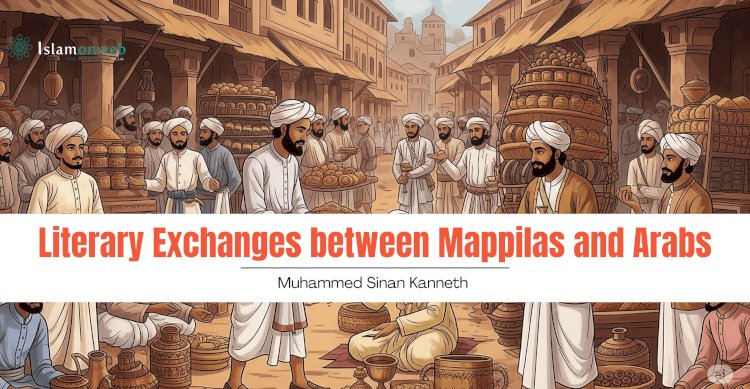


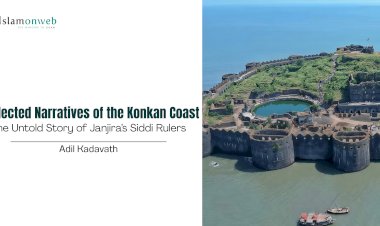
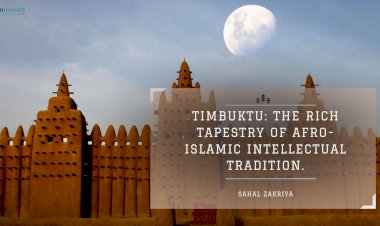
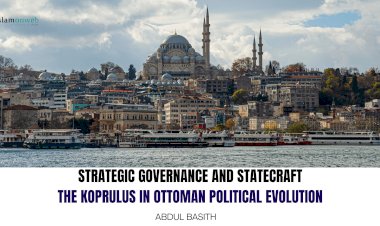
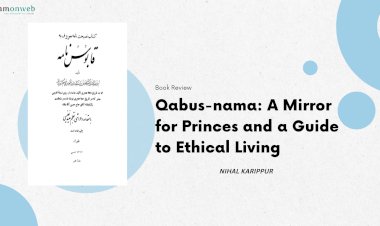
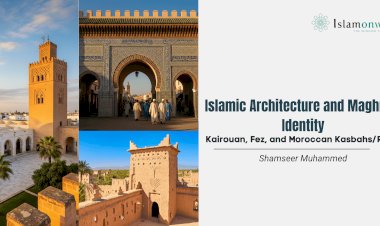
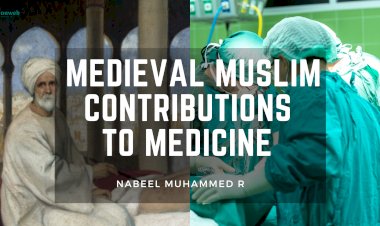












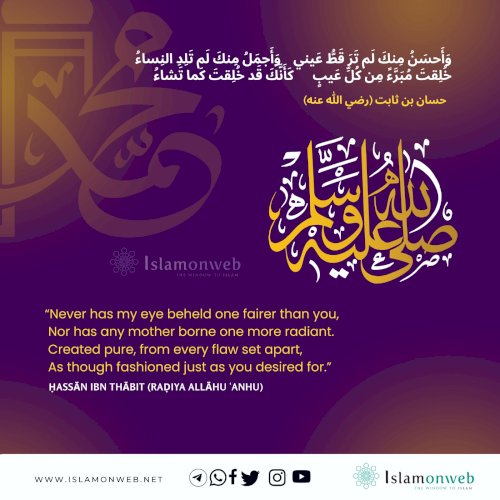

Leave A Comment